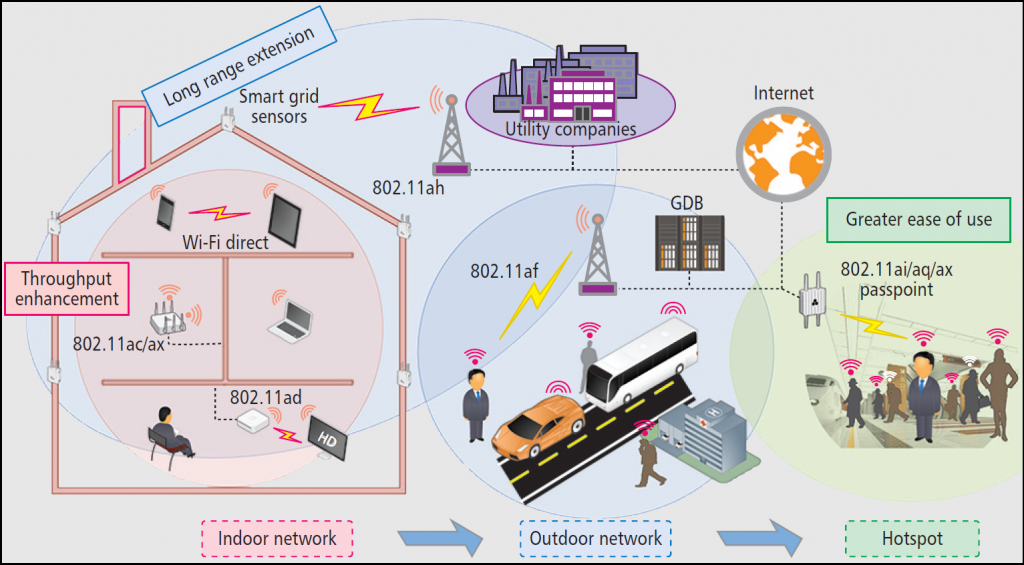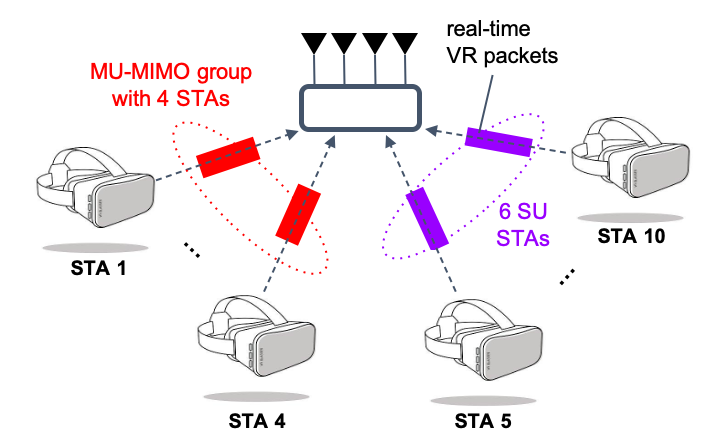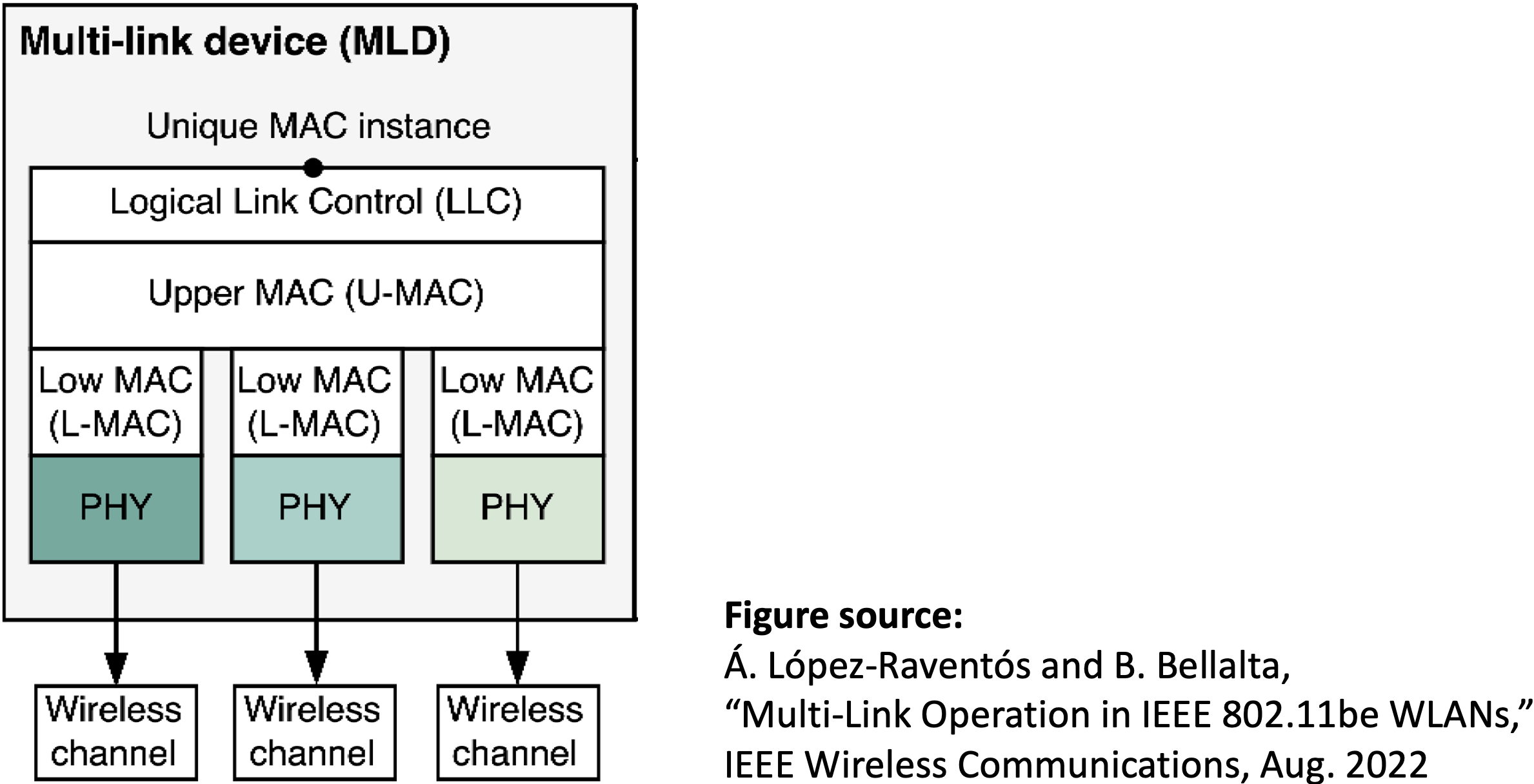Wireless Local Area Network (WLAN) is arguably the most popular wireless networking applications in the past decades. Its success is partly rooted at its evolving international standards by adapting to the new technologies (e.g., MIMO, OFDM) and ever-increasing user demands. WLAN is first standardized as IEEE 802.11 in 1997, and since then its PHY and MAC layers have been enhanced to produce many variations such as IEEE 802.11a/b/e/g/n/ac/ax. The future of WLAN is envisioned as taking one of three main directions: throughput enhancement (e.g., 802.11ac/ad/ax/be), long range extension (e.g., 802.11ah/af), and greater ease of use (e.g., 802.11ai/aq).

WMNL is actively performing a research on next-generation low-latency WLAN to support real-time VR/AR/MR (with high video resolution and low-latency, for no motion sickness), which is supported by Samsung Research Funding & Incubation Center for Future Technology (SRFC). We consider various techniques to achieve the goal, such as latency-aware STA grouping for joint uplink/downlink MU-MIMO scheduling. While state-of-the-art STA grouping algorithms only focus on inter-STA channel correlation for maximal throughput, we try to address both latency and throughput.

WMNL is also performing a cutting-edge research on IEEE 802.11be, a next-generation WLAN standard a.k.a. Wi-Fi 7. In particular, we are developing various technologies to maximize the performance of Wi-Fi 7’s MLO (Multi-Link Operation) and to strike a balance in the performance of Wi-Fi 7’s MLD (Multi-Link Devices) coexisting with legacy WLAN (e.g., Wi-Fi 6) devices.

